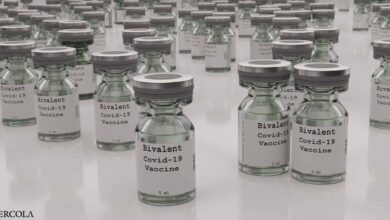Children’s Mercy makes progress advancing pediatric genomics


To diagnose and solve pediatric diseases, Children’s Mercy Kansas City’s has been performing whole-genome sequencing tests.
Recently the hospital announced that it is the first healthcare organization to bring genetic testing bedside, says Dr. Tomi Pastinen, director of Center for Pediatric Genomic Medicine.
Meanwhile, the cost of genetic and genomic testing has been coming down with its role in the standard of care for cancer and neonatal care. During the COVID-19 pandemic, healthcare organizations began looking at how genetics can support other specialties, such as in tailoring therapy with pharmacogenetic insights for older chronic care patients, according to 2bPrecise cofounder and chief medical officer Joel Diamond.
Costs for genetic tests are now lower than lipid profiles and consumer ancestry tests, and a patient only needs to have the test once for it to have value for the rest of that patient’s life, he told Healthcare IT News.
With such precision medicine, clinicians can better understand what is driving disease at the molecular level and improve patient care, as Pastinen explains in this exclusive Q&A.
Q. How does clinical whole-genome sequencing testing in the clinical setting work?
A. Though we are now using HiFi sequencing in the clinical setting, we have, since late 2020, been pioneering advances in the human genome using HiFi-GS and 5-base HiFi-GS that transforms diagnosing and understanding of unsolved pediatric disease.
Five-base HiFi-GS was the first-time researchers were able to both sequence the full genome at high accuracy and measure methylome to interpret genome function to see disease variations never seen before in a single test. In the past 2 1/2 years, we have successfully sequenced over 1,500 human genomes.
Most of these genomes are from patients that participated in our research to find genetic diagnoses beyond existing clinical sequencing, and we have solved dozens of cases where earlier clinical testing failed. The examples of research successes include repeat expansion diseases, as well as disease variants where detection of DNA methylation pattern forms part of the diagnostic finding.
Q. How does the testing accelerate the search for novel treatments of pediatric genetic conditions?
A. This is a global first to offer this kind of advanced genomic sequencing approach, moving it outside of the research lab and into clinical practice to get answers for more patients and families.
The cutting-edge technology replaces rapid exome, chromosomal microarray analysis and other conventional diagnostic testing as a first line expediated assessment for the most-critically ill patients in the hospital with a strong suspicion of genetic disease.
With this testing, we have been able to consolidate tests, increase efficiency and improve diagnostic yields. As well, we have accelerated the turnaround in testing. Results that can take months with multiple legacy tests can now be achieved in two weeks with HiFi sequencing.
Since it includes many tests in one, it also assures that, even if the provider did not consider all possible genetic mechanisms in primary test order, the coverage for rarer, but difficult-to-detect diseases is included in the patient genome data. It may provide valuable information on true existence of diseases requiring individual test orders in the past.
Some of the difficult-to-detect genetic variation occur in treatable conditions, and testing early for these brings new options for management of this subset of patients.
Q. What infrastructure is required to offer whole-genome sequencing in the clinical setting?
A. The collection of the genome data repository is the necessary critical mass for us to start to interpret rare, potentially diagnostic variants in genome sequence or in its methylation patterns.
The next step is to use the data resource to show known disease variation in clinical validation test. We need standardized workflows in the laboratory with documentation to fulfill regulatory requirements. Similarly, for data analyses and reporting we need fully documented sequence data processing approaches that matured during our research work.
Q. How is the data shared as well as protected?
A. All identifiable medical data and linked genome-sequencing data is stored fully secured, similar to any other medical data in health systems.
In case of genetic diseases and in order to advance identification of patients with rare genetic variation, the clinical community shares deidentified genetic variant data in National Institutes of Health (NIH) resources such as ClinVar. All such shared variation informs of a single DNA variant interpreted by clinical laboratory, but fully decoupled from any personal information.
Andrea Fox is senior editor of Healthcare IT News.
Email: [email protected]
Healthcare IT News is a HIMSS Media publication.




